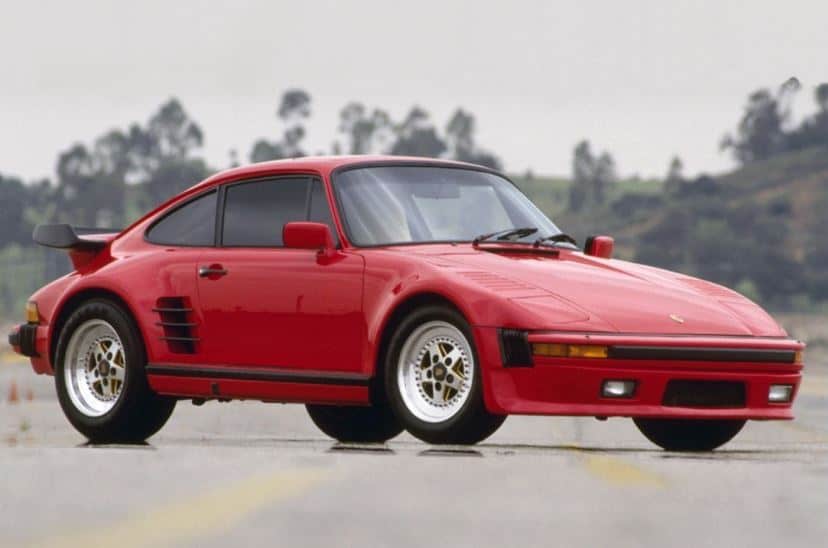Year: 1981-1987 Generation: 930 Units built: 948
Engine: Single turbo flat-six | Power: 260 to 330 hp | 0 – 60 mph: 4.7 s | Top Speed: 171 mph
Demand for the 930 Turbo soared at the turn of the 1980s, which is why Porsche decided to introduce option M505 which was known as the Flachbau or “flat nose” or “slant nose”. The Porsche 911 Turbo “Flachbau” was a special edition of the car which came with a different look.
The model was offered as part of the special-order program beginning in 1981, an otherwise normal 930 with a 935-style slant nose instead of the normal 911 front end. Each Flachbau unit was handcrafted by remodeling the front fenders (option code M505). In 1986 (1987 model year) Porsche finally offered the slant nose straight from the factory. The official designation in the UK was Turbo SE.
The regular 930 Turbo was costly enough, but the stylistically different Flachbau commanded a big premium over it because the ‘80s were all about having the most expensive whatever. That sharply drooped snout may not be to some people’s liking, yet Porsche had no problem at all with selling the Flachbau for almost double the cost of the regular Turbo.
Besides the flat front, the car also came with a different engine than the older Porsche models, namely a 3.3-liter which produced 330 horsepower. With a rear-wheel drive and a top speed of 171 mph, the Porsche 911 Turbo “Flachbau” was the fastest mass production car at the time of its launch. To put that firepower into perspective, think of the 930 Turbo Flachbau as the next best thing after the naturally aspirated Ferrari BB 512i, a supercar which was never sold in the U. S.
Despite the panels being slightly heavier, they were modeled after the 935-race car for top speed. The conversion required extended rocker panels, wider rear flares with scooped vents and flip-up headlights up front with functional louvres.

